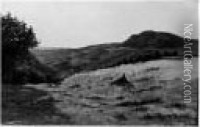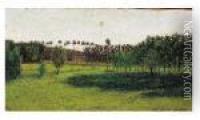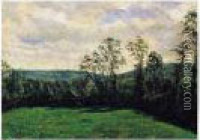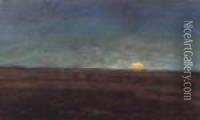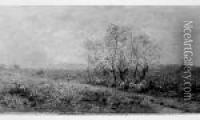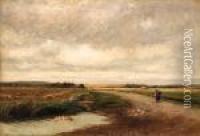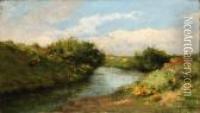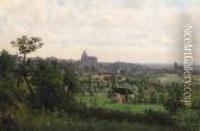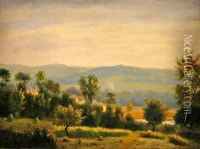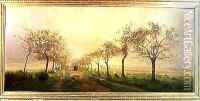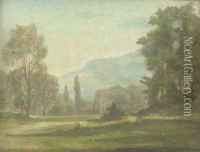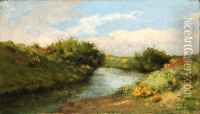Antoine Chintreuil Paintings
Antoine Chintreuil was a French landscape painter who is associated with the Barbizon School, a group of artists working in the Barbizon region of France who focused on realistic landscape painting and laid the groundwork for Impressionism. Chintreuil was born on May 15, 1814, in Pont-de-Vaux, Ain, France. He initially trained in business, but his passion for art led him to abandon a career in trade and pursue painting.
Chintreuil moved to Paris in the 1830s to study art, and while he did not receive formal academic training, he worked and learned in the studios of various artists including Camille Corot, who greatly influenced his style. Chintreuil's early works were often small-scale landscapes that depicted the countryside around Paris, and he became known for his ability to capture the subtle changes of light and atmosphere.
Throughout his career, Chintreuil exhibited at the Paris Salon, gaining recognition and accolades for his work. His approach to landscape painting was characterized by a delicate handling of light and a soft, harmonious palette. He frequently painted the effects of light on water and the open fields, which later would become a common subject for Impressionist painters.
Chintreuil was admired by many of his contemporaries, including the young Impressionists, who saw in his work a move towards a more spontaneous representation of nature. He was particularly influential to the artist Pierre-Auguste Renoir, who once declared that Chintreuil was his first master. Despite his influence on the Impressionist movement, Chintreuil maintained a lower profile than some of his contemporaries within the Barbizon School.
Antoine Chintreuil passed away on August 8, 1873, in Septeuil, Seine-et-Oise, and left behind a body of work that, while not as widely known today as some of his peers, played a significant role in the transition from traditional landscape painting to the Impressionist style that would revolutionize the art world.


